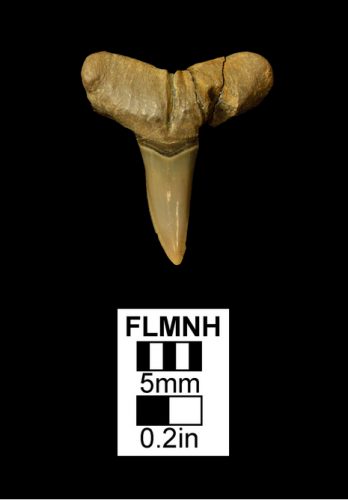
For this rendition of Fossil Friday we have the upper tooth of a lemon shark, Negaprion brevirostris. It was collected from the Lirio Este site of the Culebra Formation and is early Miocene in age.
Lemon sharks have been found in the fossil record starting in the Eocene, and they are still found today in the shallows of temperate and tropical ocean waters as well as near the mouths of rivers. Their name comes from their yellowish brown coloring, which helps them stay camouflaged when swimming over sand.
To find out more about this specimen, read the article where it is figured here. One author of this article is the co-author of a new paper on body size trends in the giant shark Carcharocles megalodon, which you can read here.
To find out more about modern-day lemon sharks, check out the FLMNH Icthyology Department’s description here.